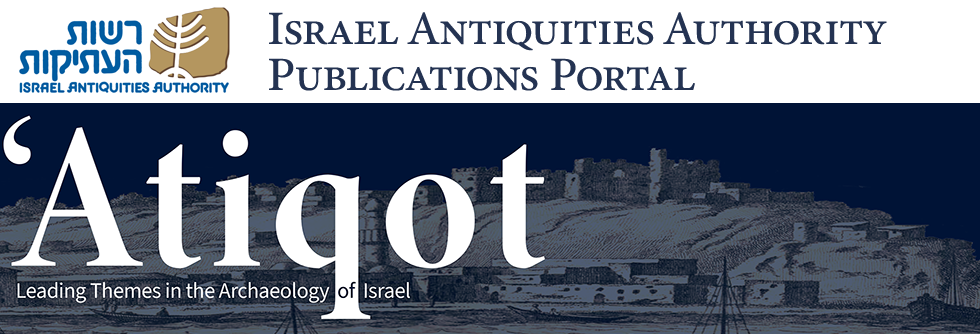Abstract
Two buildings were exposed. The northern building comprised rooms surrounding a central courtyard; the pottery finds from this building date from the Persian period, and chiefly, to the Hellenistic and Early Roman periods (first century BCE). Only two rooms survived of the southern building, which apparently opened to a courtyard. Many storage-jar sherds were found, seemingly in situ. On two of them, Aramaic letters were incised before firing. An Achaemenid-style conical glass seal was unearthed, depicting a hero or a ruler holding flanking lions. This building may have had an administrative or storage function. Three tombs were uncovered in proximity to the southern building; they probably date to the Persian period.
Keywords
stone vessels, Second Temple period, limekilns, art, epigraphy, burial
Recommended Citation
Baruch, Yuval
(2006)
"Buildings of the Persian, Hellenistic and Early Roman Periods at Khirbat Kabar, in the Northern Hebron Hills (Hebrew, pp. 49*–71*; English summary, pp. 205–207),"
'Atiqot: Vol. 52, Article 55.
DOI: https://doi.org/10.70967/2948-040X.2148
Available at:
https://publications.iaa.org.il/atiqot/vol52/iss1/55
Included in
Agriculture Commons, Biblical Studies Commons, History of Art, Architecture, and Archaeology Commons

